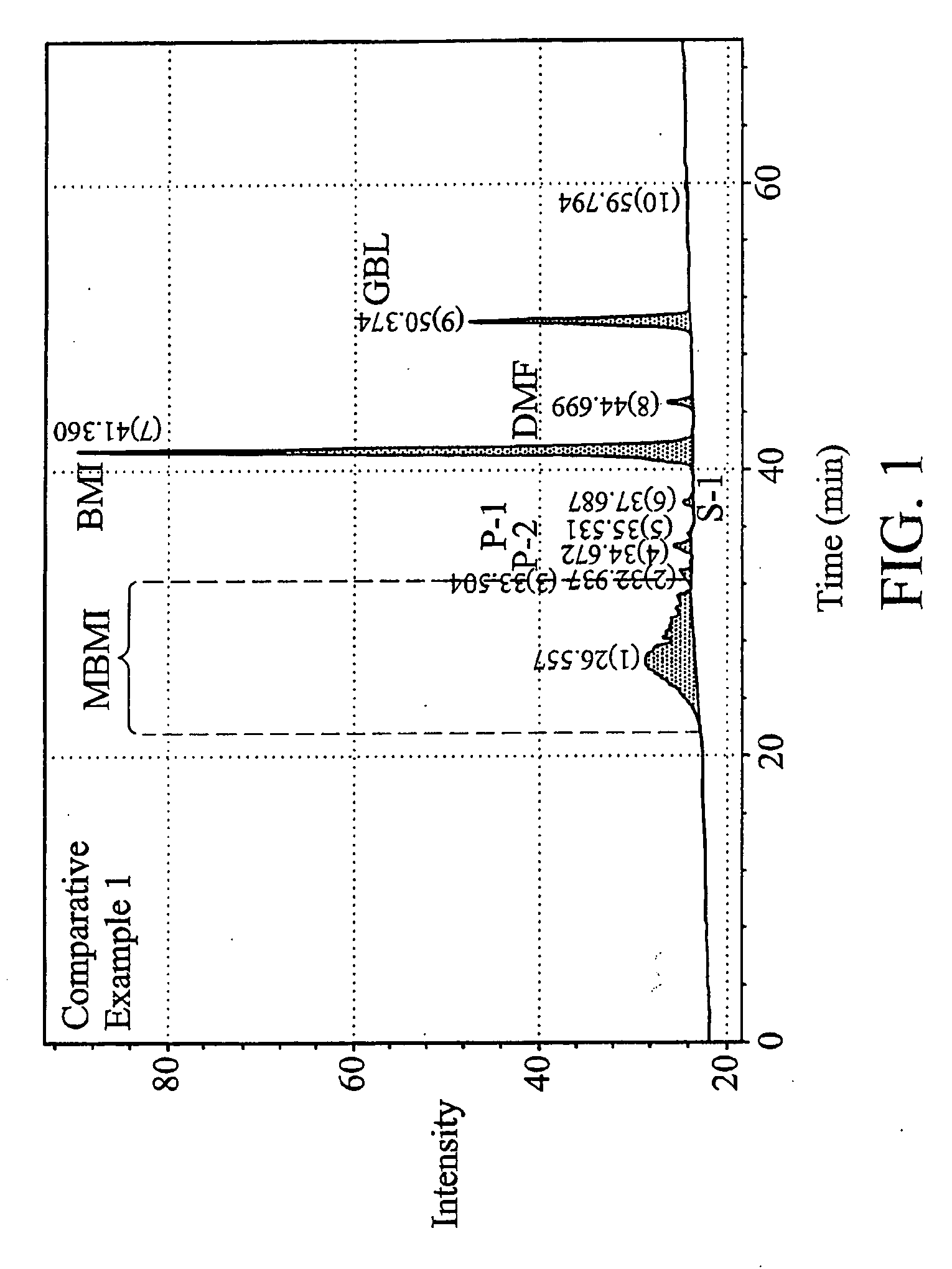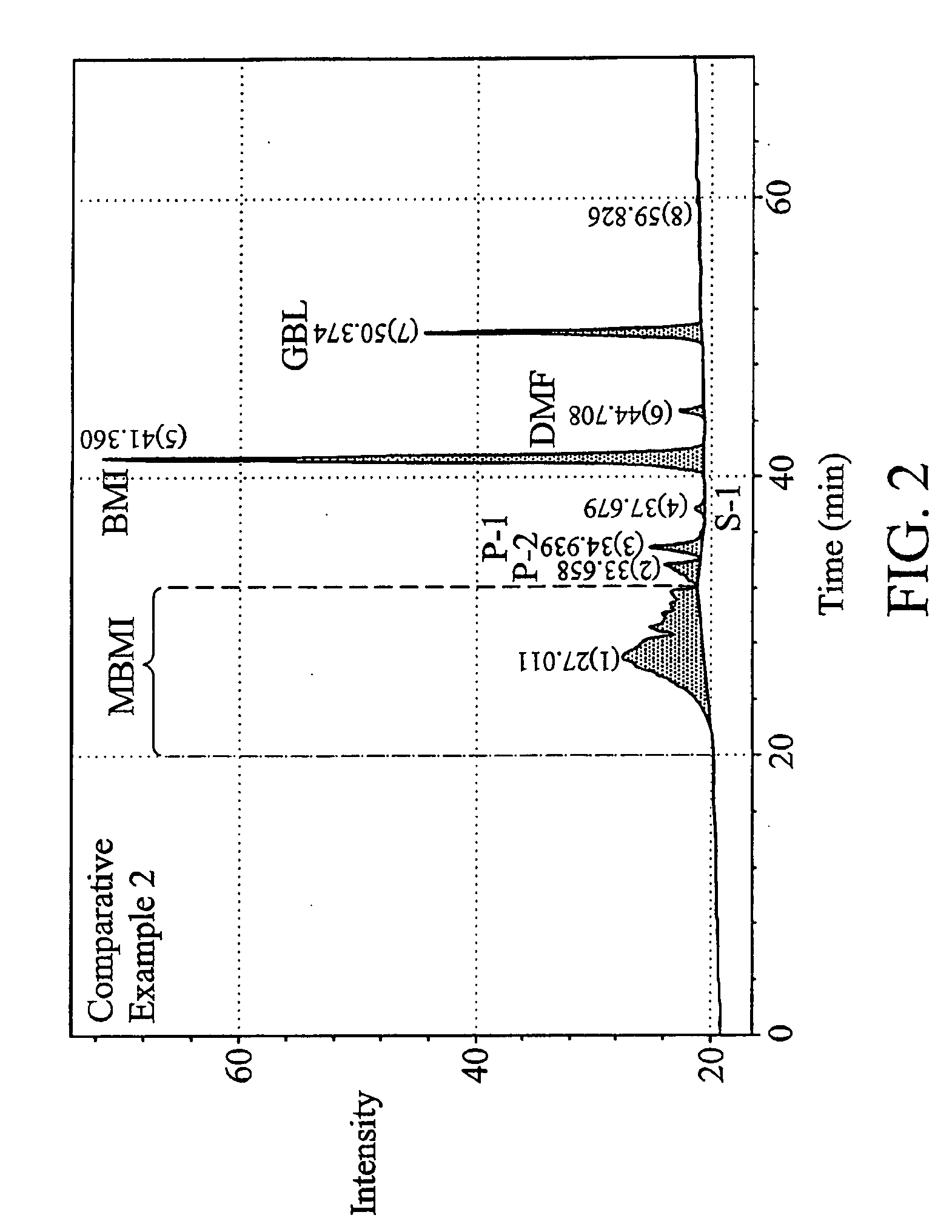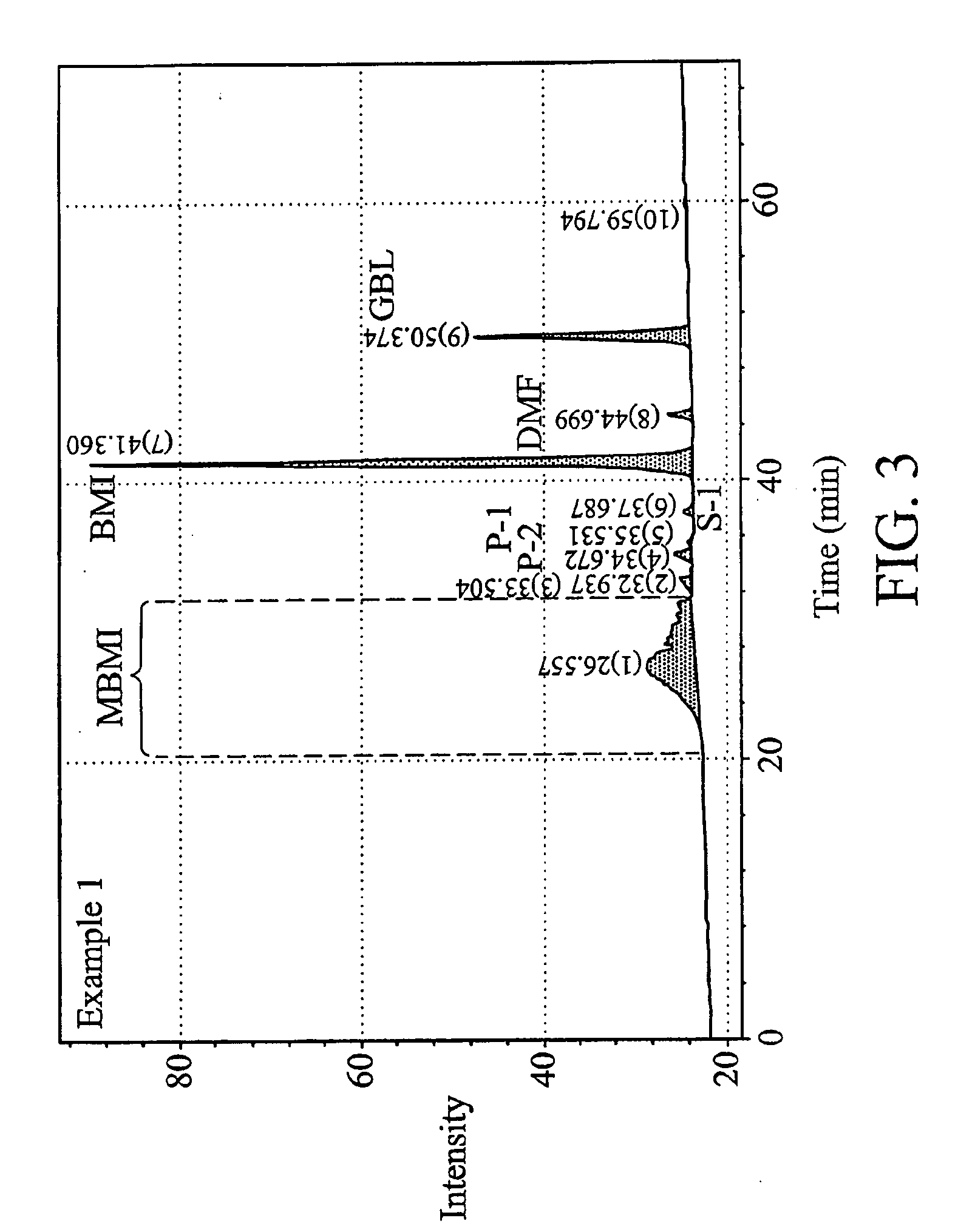Nonaqueous electrolyte having maleimide additives and secondary cells employing the same
a technology of maleimide additives and secondary cells, which is applied in the direction of electrolytic capacitors, capacitor details, capacitors, etc., can solve the problems of limited applicability, high moisture absorption, and reduced glass transition temperature and toughness,
- Summary
- Abstract
- Description
- Claims
- Application Information
AI Technical Summary
Benefits of technology
Problems solved by technology
Method used
Image
Examples
example 1
[0037]20.0002 g 1,1-methylenedi-4,1-phenylene bismaleimide monomer particles or powder and 94.3022 g γ-butyrolactone were mixed in a 250 mL round-bottomed three-necked flask and heated to 130° C. with stirring until the bismaleimide monomer was completely dissolved. Next, 3.5752 g barbituric acid powder was progressively added to the 130° C. bismaleimide / γ-butyrolactone solution with 8 batches (30-min interval) and stirred to perform bismaleimide polymerization. After addition of the barbituric acid batches were completed, the polymerization continuously proceeded for 6 hr to form bismaleimide oligomer. The mole concentration ratio of the bismaleimide and barbituric acid was 2:1.
example 2
[0038]19.9995 g 1,1-methylenedi-4,1-phenylene bismaleimide monomer particles or powder and 108.6008 g γ-butyrolactone were mixed in a 250 mL round-bottomed three-necked flask and heated to 130° C. with stirring until the bismaleimide monomer was completely dissolved. Next, 7.1483 g barbituric acid powder was progressively added to the 130° C. bismaleimide / γ-butyrolactone solution with 16 batches (15-min interval) and stirred to perform bismaleimide polymerization. After addition of the barbituric acid batches were completed, the polymerization continuously proceeded for 6 hr to form bismaleimide oligomer. The mole concentration ratio of the bismaleimide and barbituric acid was 1:1.
example 3
[0039]19.9991 g 1,1-methylenedi-4,1-phenylene bismaleimide monomer particles or powder and 94.2997 g propylene carbonate were mixed in a 250 mL round-bottomed three-necked flask and heated to 130° C. with stirring until the bismaleimide monomer was completely dissolved. Next, 3.57573 g barbituric acid powder was progressively added to the 130° C. bismaleimide / propylene carbonate solution with 4 batches (60-min interval) and stirred to perform bismaleimide polymerization. After addition of the barbituric acid batches were completed, the polymerization continuously proceeded for 6 hr to form bismaleimide oligomer. The mole concentration ratio of the bismaleimide and barbituric acid was 2:1.
PUM
| Property | Measurement | Unit |
|---|---|---|
| molar ratio | aaaaa | aaaaa |
| temperature | aaaaa | aaaaa |
| time | aaaaa | aaaaa |
Abstract
Description
Claims
Application Information
 Login to View More
Login to View More - R&D
- Intellectual Property
- Life Sciences
- Materials
- Tech Scout
- Unparalleled Data Quality
- Higher Quality Content
- 60% Fewer Hallucinations
Browse by: Latest US Patents, China's latest patents, Technical Efficacy Thesaurus, Application Domain, Technology Topic, Popular Technical Reports.
© 2025 PatSnap. All rights reserved.Legal|Privacy policy|Modern Slavery Act Transparency Statement|Sitemap|About US| Contact US: help@patsnap.com



